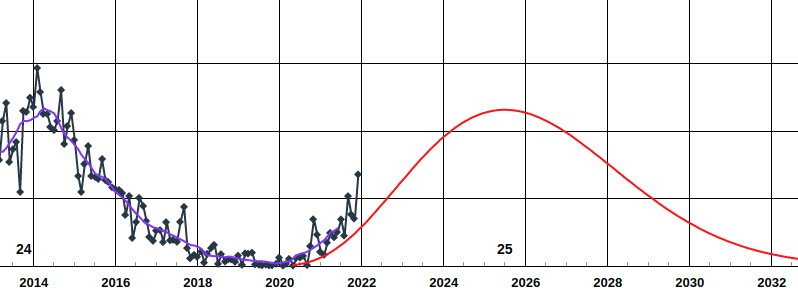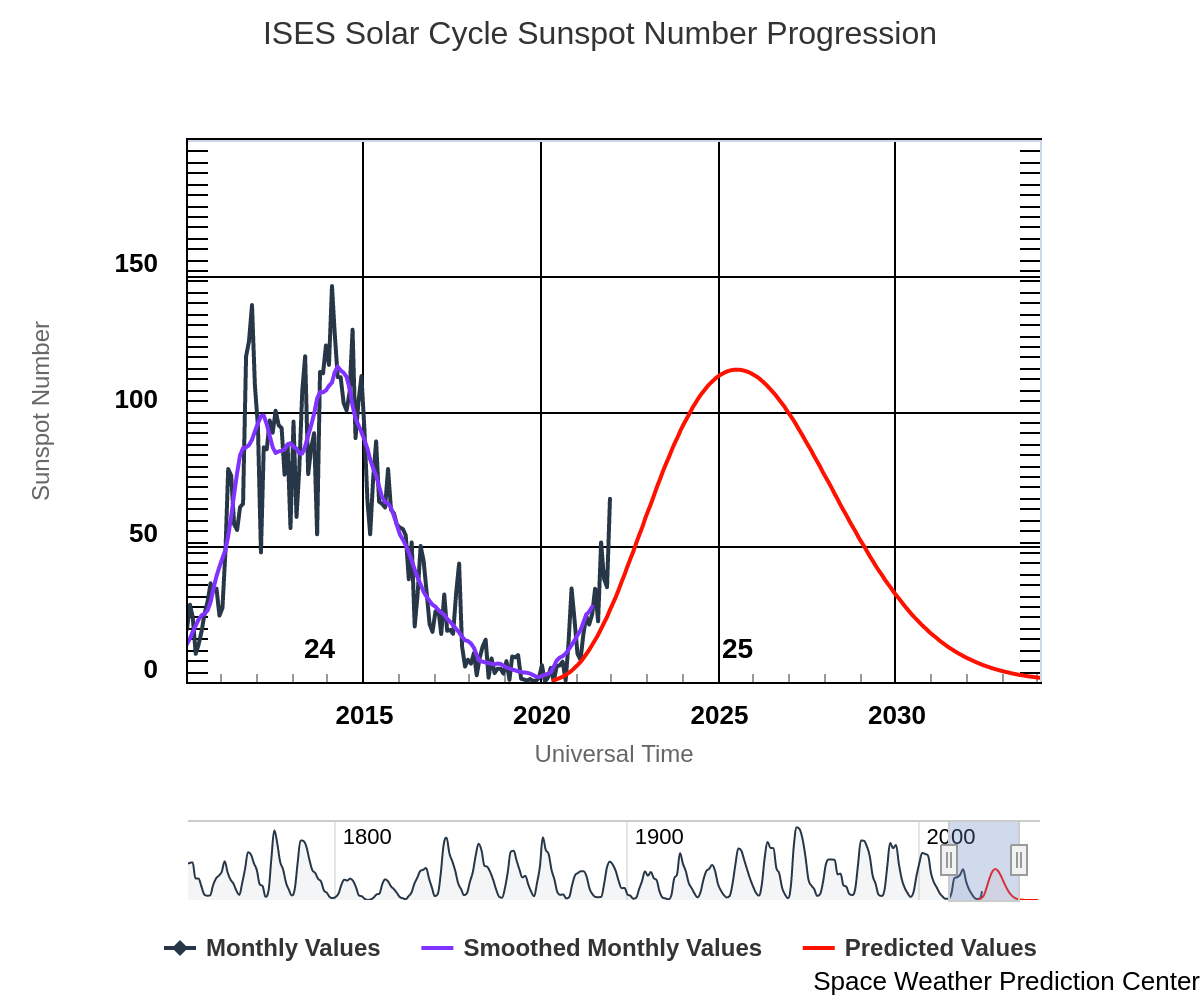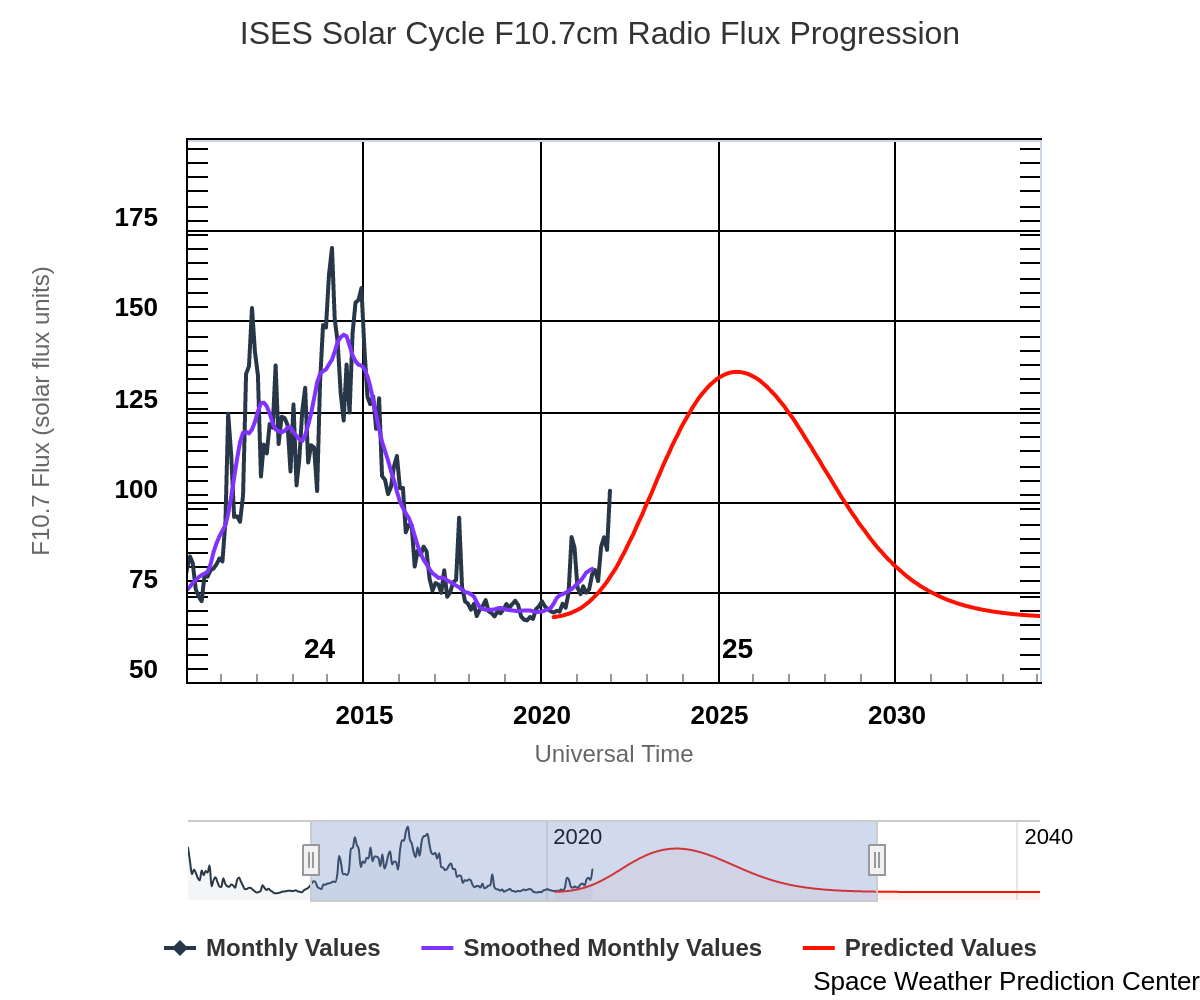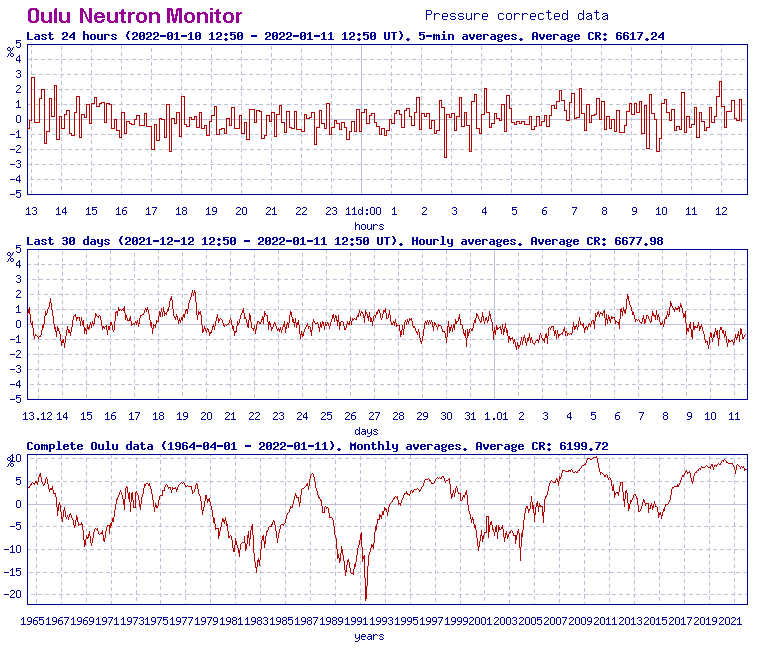Solar Cycle 25 outrunning the official forecast

New sunspot counts from National Oceanic and Atmospheric Administration (NOAA) confirm that Solar Cycle 25 sunspot numbers have now exceeded predictions for 15 straight months. Consequently, the geomagnetic activity is ramping up while cosmic rays reaching Earth are decreasing from historically high values.
Using a variety of leading indicators, the Solar Cycle Prediction Panel representing NOAA, NASA and International Space Environmental Services (ISES) predicted that Solar Cycle 25 would peak in July 2025 as a relatively weak cycle, similar in magnitude to its predecessor Solar Cycle 24.1
Instead, Solar Cycle 25 is shaping up to be stronger and geomagnetic activity has nearly tripled since the new solar cycle began, Dr. Tony Phillips of SpaceWeather.com reports.
"In 2020, the first full year of Solar Cycle 25, there were 9 days with at least minor (G1-class) geomagnetic storms. That number skyrocketed to 25 days in 2021. One of those “storm days” (November 4, 2021) was a borderline G4-class (severe) event with auroras sighted as far south as California and New Mexico. A similar progression may be expected in 2022."
Additionally, the Sun produced 0 X-class solar flares from late 2017 until X1.52 on July 3, 2021, and X1.03 on October 28, 2021.

 Consequently, cosmic radiation is now decreasing from historically high values recorded in 2020.
Consequently, cosmic radiation is now decreasing from historically high values recorded in 2020.

Reference:
1 Solar Cycle 25 Update – SpaceWeather
2 Major X1.5 solar flare erupts — the first X-class flare of Solar Cycle 25 – The Watchers
3 Major, long-duration X1.0 solar flare erupts from AR 2887, Earth-directed CME produced – The Watchers
Featured image credit: NOAA/SWPC

Can’t predict the weather now,who’s head on backwards?Thanks TW.
Wouldn’t the most obvious answer be that we are getting better at seeing them and aren’t missing any, so of course the numbers will go up? It is like the NEO Asteroid spotting, they are still missing a lot of the ones under 8meters, but we are seeing a lot more of what passes between us and the moon, numbers have been “Going Up” for years!